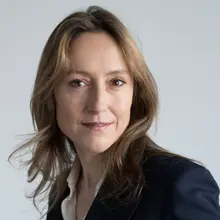Summary
- The ECB raised policy rates by 50bp, as expected, with the deposit rate now at 2.0%, and delivered an unexpected hawkish message, as inflation remains the top concern. The statement was much more hawkish than in October, pointing out that “interest rates will still have to rise significantly at a steady pace”.
- ECB projections: Price pressures will persist. The ECB foresees core inflation still being above target in 2025. Regarding growth, the ECB foresees a shallow and short-lived recession over Q4 2022 and Q1 2023, followed by a recovery, driven by abating supply bottlenecks, China reopening, labour market strength, and base effects on energy.
- Revision to the terminal rate: We have revised our terminal deposit rate from 2.5% to 3.0%, with risks tilted to a possible further rise.
- Quantitative tightening (QT): QT will start in March, concerning only the APP portfolio and not PEPP holdings, through a decline in reinvestments by €15bn per month, on average. This pace will last until June “and its subsequent pace will be determined over time”. In the press conference, Vice President De Guindos reiterated the predictable, prudent and measured pace intended for QT.
- Investment implications: The ECB gave a definitely hawkish signal, not only on the rate path side, but also on QT. This led to flattening of the euro curve, widening of peripheral spreads, and retracement of short maturities swap spreads. We think more could come regarding peripheral countries. As to the yield curve and positioning, it is too early to play some possible steepening, which generally comes when a peak in rates is in sight. On credit markets, higher volatility on the rate side will not help and we could see less stability on credit spreads if Eurozone economic activity slows. So, selection remains paramount at this stage. From a sector standpoint, the renewed rate path should support our current stance favouring the banking sector.
Highlights from December ECB meeting
At its December meeting, the ECB hiked rates by 50bp, to 2.0% (deposit rate). The Bank delivered a very hawkish statement. Inflation remains the main concern and top priority. The ECB foresees sticky inflation, with Eurozone inflation driven mostly by energy prices. Fiscal policy also plays a key role while supporting demand. In the short term, we see pressure on core sovereign bond rates and on peripheral spreads. We revised our terminal deposit rate in the current hiking cycle to 3.0% from 2.5%, with risks tilted to a possible further upgrade. Beyond the impact of domestic economic variables, European government bond yields are determined by the price of energy and fiscal and monetary policy choices:
- On one side, risks of a prolonged recession pose downside risks to yields;
- On the other, the combination of a new regime of higher energy prices and persistent expansionary fiscal policy could lead to a debt supply shock and persistent inflationary pressures.
President Lagarde pointed out that fiscal policy is doing a terrible job so far because it is not targeted enough. In the case of an overly expansionary fiscal policy, the ECB will have to tighten its monetary policy more than initially expected (see also here). Moving into 2023, the ECB will have to balance its credibility against financial stability equilibrium:
- Credibility: The ECB will have to keep rates at restrictive levels to guard against the risk of a persistent rise in inflation expectations. A central bank has few tools to fight cost-driven inflation.
- Financial stability: High debt levels and growing financing needs will put a limit on the ECB's willingness to tighten monetary policy. Net government bond issuance net of ECB flows will more than double in 2023.
A surprisingly hawkish ECB, with more hikes to come
The statement was much more hawkish than in October, pointing out that “interest rates will still have to rise significantly at a steady pace”. In October, the statement was more focused on recognising the “substantial progress in withdrawing monetary policy accommodation”. The reference to “dampening demand” in order to reduce inflation shows a return to the rhetoric of the September statement – more hawkish than that in October – which shifted to “Monetary policy is aimed at reducing support for demand”.
In the press conference, despite reiterating a still data-dependent approach, President Lagarde confirmed a sort of pre-commitment regarding upcoming rate hikes (at a steady pace of 50bp) in order to reach the needed significant tightening.
We foresee more hikes to come. The ECB is not pivoting and wants to hike rates firmly into restrictive territory to reach levels that are sufficiently restrictive to ensure a timely return of inflation to the 2% medium-term target.
The ECB will need to keep rates at restrictive levels over time to reduce inflation by dampening demand and also guard against the risk of a persistent upward shift in inflation expectations. Lagarde said that the ECB would raise its key rates by 50bp at its next meeting, probably at the following one and maybe even after that. “We’re not pivoting”, Lagarde stressed. “We are not wavering, we are showing resilience and determination”.
We revised our terminal deposit rate in the current hiking cycle to 3.0% from 2.5%.
Inflation is the main concern and top priority
The ECB has massively increased its projections for inflation compared to September. Price pressures remain strong across sectors as the cost of energy is passed through across the economy and the euro stays weak. Wage growth has been strengthening, supported by robust labour markets and some catch-up to compensate workers for inflation. Price pressures will persist: forecasts show core inflation above target still in 2025. The ECB foresees core inflation at:
- 4.2% in 2023 vs 3.4% previously;
- 2.8% in 2024 vs 2.3% previously; and
- at 2.4% in 2025.
Inflation should peak in early 2023. Risks to the inflation outlook remain tilted to the upside. Lagarde stressed the ECB message to governments: make your fiscal policies more targeted, as fiscal support to shield the economy from the impact of the energy crisis could “exacerbate inflationary pressures which would necessitate a stronger monetary policy response”. Fiscal policy should aim at making the economy more productive and reducing public debt.
Growth: shallow and short-lived recession followed by recovery
The ECB sees a shallow and short-lived recession over Q4 2022 and Q1 2023, followed by a recovery, driven by abating supply bottlenecks, China reopening, labour market strength, and base effects on energy. The ECB foresees GDP at:
- 3.4% in 2022 vs 3.1% previously;
- 0.5% in 2023 vs 0.9% previously; and
- 1.9% in 2024 vs 1.9% previously.
QT: no big surprise and measured start
QT will start in March and relate to only the APP portfolio, not PEPP holdings. “[The] APP portfolio will decline at a measured and predictable pace”, in a passive way through a decline in reinvestments by €15bn per month, on average. This pace will last until June “and its subsequent pace will be determined over time”. In the press conference, Vice President De Guindos reiterated the predictable, prudent and measured pace intended for QT. At its February 2023 meeting, the ECB will provide “the detailed parameters for reducing the APP holdings”. Rates represent the main tool to fight inflation. QT looks to be a complement.
QT will start in March and concern only the APP portfolio and not PEPP holdings.
Investment implications
The ECB offered a definitely hawkish signal to the markets, not only on the rate path side, but also on QT, alongside a higher revised issuing programme from Germany. This led to flattening of the euro curve, widening of peripheral spreads, and retracement of short maturities swap spreads towards more normalised levels. We think more could come on peripheral countries, as the ten-year BTP level remains below the level at which the ECB announced the Transmission Protection Instrument (TPI). Regarding the yield curve and positioning, it is too early to play some possible steepening, which generally comes when a peak in rates is in sight. Moreover, we would not expect the swap spreads correction to fade, as it corresponds to an assumed action by Germany of making more German paper available on the street. On credit markets, higher volatility on the rate side will not help and we could see less stability on credit spreads if Eurozone economic activity slows. From a sector standpoint, the renewed rate path should support our current allocation favouring the banking sector.

The ECB’s hawkish message drove volatility in European fixed income markets, in particular on peripherals, where more could come.


